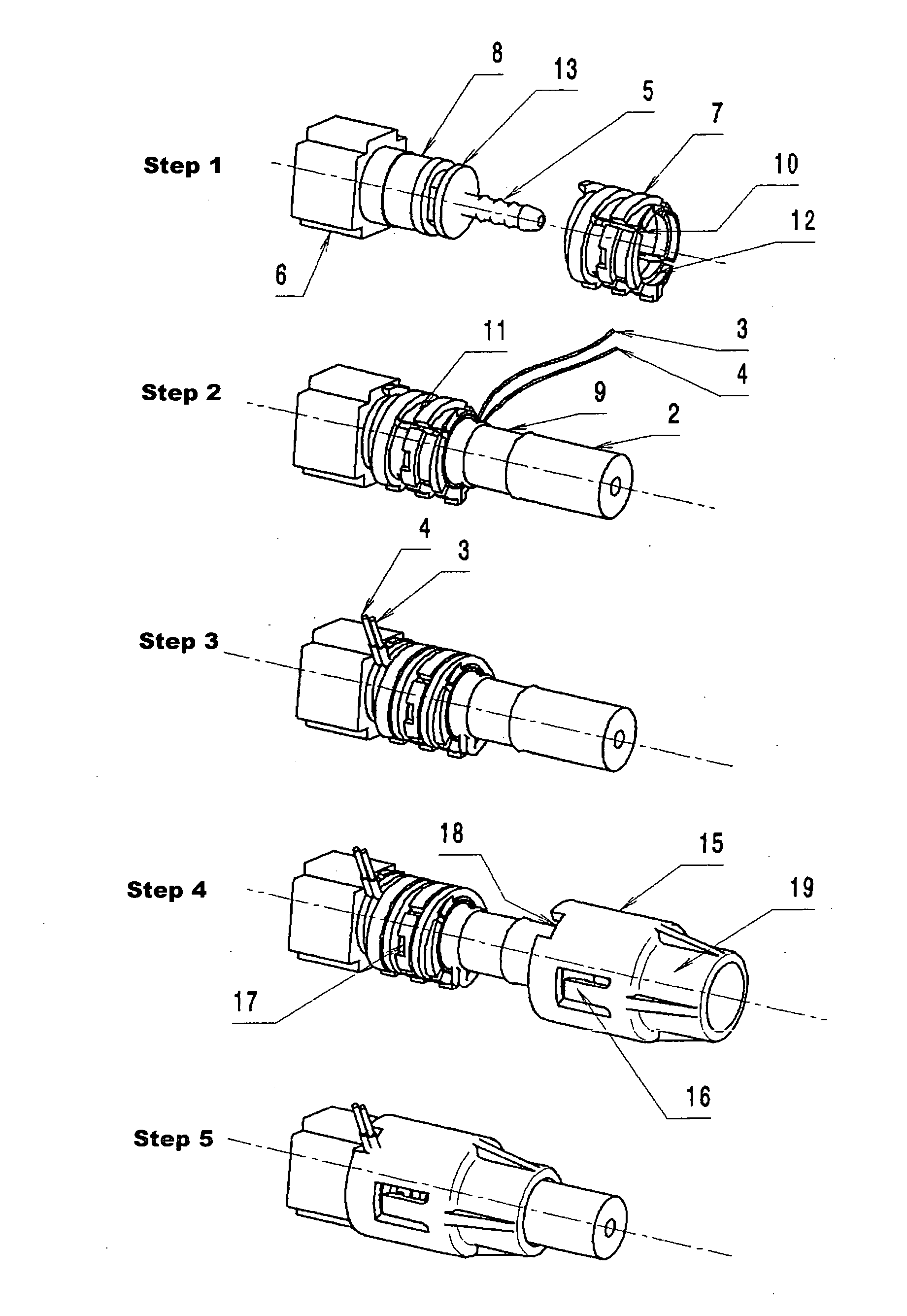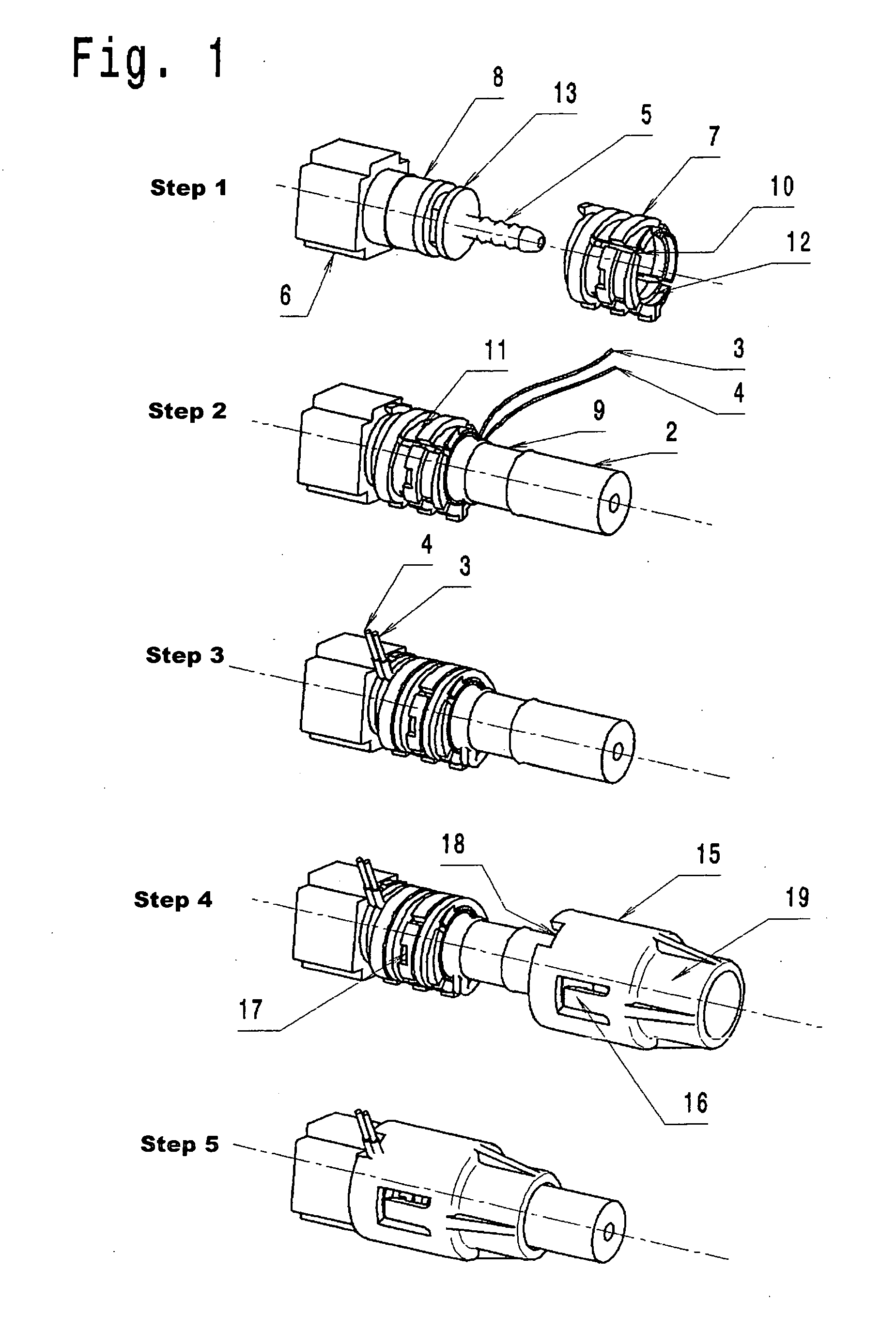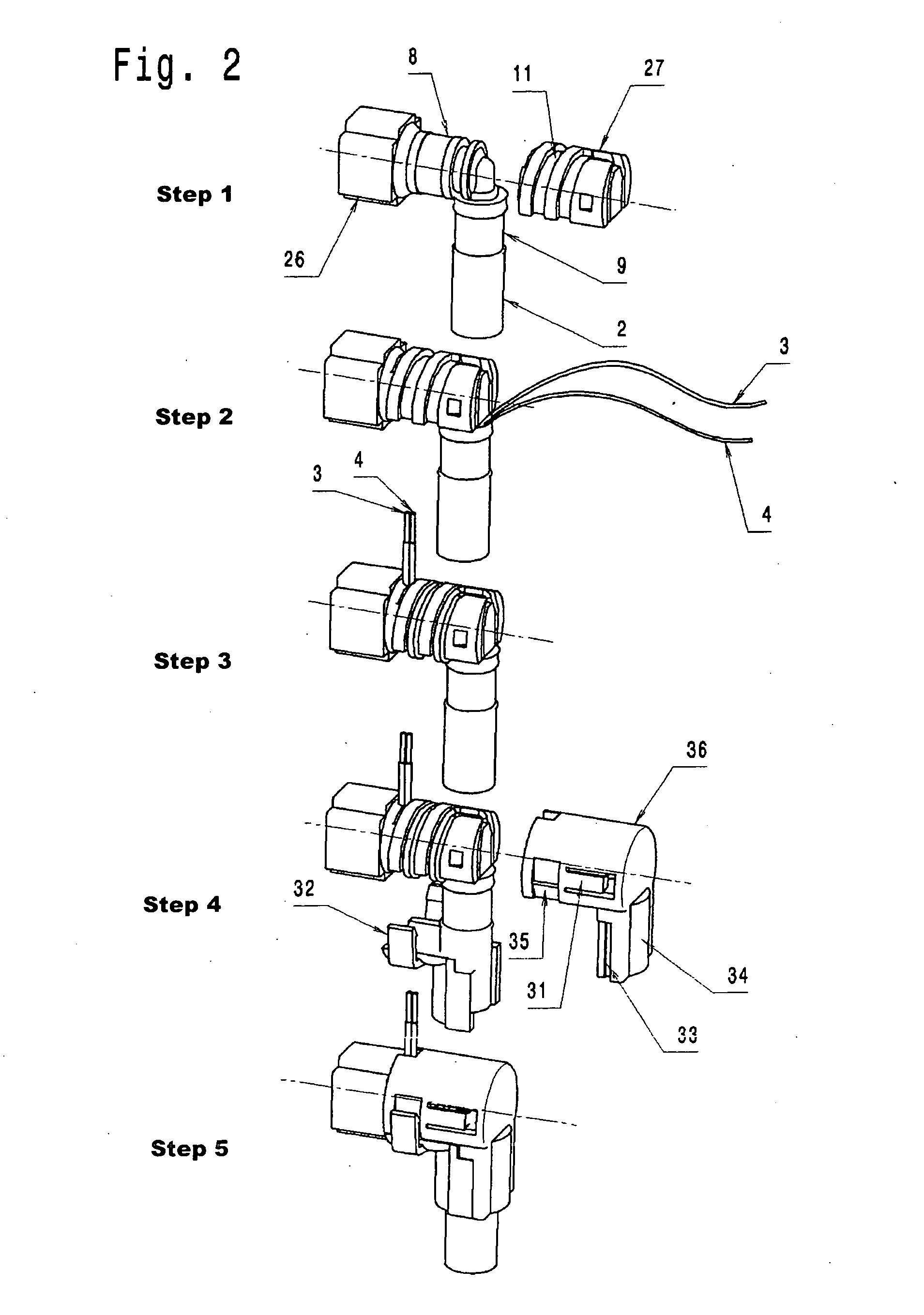Connector arrangement for a medium-conducting, electrically-heatable hose
- Summary
- Abstract
- Description
- Claims
- Application Information
AI Technical Summary
Benefits of technology
Problems solved by technology
Method used
Image
Examples
Embodiment Construction
[0034]The plug connector is shown in five assembly steps in FIG. 1 and receives the end of an electrically-heatable hose 2. After the hose end has been fitted on an assembly (not shown), for example a reservoir tank, an injection unit, a pump et cetera, which has a male plug connector already mounted as a mating part, the connector arrangement, which is configured with a female quick-action plug connector 6 as a main component, is mounted by simple plugging in. The female plug structure cannot be seen in the perspective illustration and lies opposite the connector element 5.
[0035]The hose 2, which is shown with only a short segment, is heated with two coiled heating conductors or leads 3 and 4, often also referred to as heating stranded conductors, which are integrated into the hose structure. For the fitting of the electrical plugs (not shown here), the individual heating conductors 3 and 4 are exposed at the end of the hose 2. The two heating conductors 3 and 4 here are exposed at...
PUM
 Login to View More
Login to View More Abstract
Description
Claims
Application Information
 Login to View More
Login to View More - R&D
- Intellectual Property
- Life Sciences
- Materials
- Tech Scout
- Unparalleled Data Quality
- Higher Quality Content
- 60% Fewer Hallucinations
Browse by: Latest US Patents, China's latest patents, Technical Efficacy Thesaurus, Application Domain, Technology Topic, Popular Technical Reports.
© 2025 PatSnap. All rights reserved.Legal|Privacy policy|Modern Slavery Act Transparency Statement|Sitemap|About US| Contact US: help@patsnap.com



